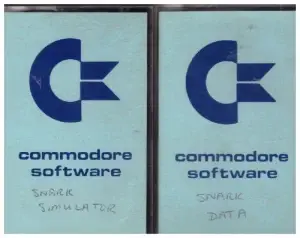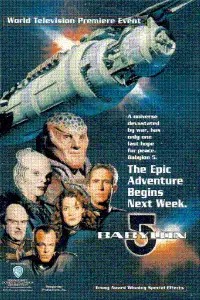HND – Communications assignment #3
Sean Lewis 26 June 2025A copy of my HND in Computer Studies 3rd Communications assignment. Written around 1991 this reviews the four bestselling word-processing packages (WordStar, WordPerfect, DisplayWrite and Microsoft word) of the time. Interestingly Microsoft’s Word was still not as clear a leader as it was to become.

Staffordshire Polytechnic
HND (Year 1)
Communications assignment #3
Date: ~1991
COMMUNICATIONS
More personal computer users have word processing software than any other kind of application. This makes text editing and formatting one of the most competitive fields in the PC industry. It also means that most users spend at least part of their time using their expensive hardware and software to emulate a typewriter.
Below I shall review the four bestselling word-processing packages (Wordstar, WordPerfect, DisplayWrite and Microsoft word).
WORDSTAR £399 Wordstar International
Wordstar and the IBM compatible PC grew up together. Despite being strongly challenged by WordPerfect, Wordstar retains its prime position here in the UK by a narrow margin on the strength of various versions that are simultaneously available. They are Wordstar 2000, and Amstrad version, version 5.5 and now version 6.0.
Wordstar has been cloned in the Unix environment by Fenix and its commands have surfaced everywhere from mainframe communications packages like Automator to utilities like Sidekick’s notepad. Wordstar itself however is a creature of IBM/DOS computing. Wordstar 5.5 is still a good choice for people who create documents requiring only light formatting. Wordstar points out that it is the productivity champion for touch typers. Because your fingers do not have to leave the alpha-numeric section of the keyboard in search of function keys or unusual key combinations, work gets done faster than with other word processing applications.
In addition to the familiar command structure that most PC users have grown to know Wordstar now has pull down menus (but no graphical user interface as yet), and even a function key driven mode to satisfy converts from other different disciplines.
In common with other word processing packages, Wordstar has begun scaling the height of Desk Top Publishing (DTP). One of Wordstar 5.5’s star features is the advanced page preview that is one of the best in the business. You can zoom in on a single page or view a screenful of thumbnail sized pages. Style sheets are also a new feature.
Wordstar has become a collection of supporting packages that contribute to the effect of the whole. There is the now industry standard and still powerful mail merge, a communications package tailored to make electronic mailing easier a disk file manager and the justifiably famous PC Outline package.
A new version, Wordstar 6.0, has been released and it offers improved support for laser printers, in particular Hewlett Packard’s latest Laserjet III, and PostScript printers. A dialogue box gives access to new font scaling abilities that take the lid off limitations on the size of type you use in your documents. A host of other sophisticated features that used to be the exclusive province of typesetters are included in this product.
WORDPERFECT £425 WordPerfect Corporation
In the UK WordPerfect runs a close second to Wordstar, but in the US it is the best seller by a large margin, accounting for over 70 per cent of all sales of word processing software. It owes its success to a very wide platform of different machine types as well as its technical features.
WordPerfect runs under about 20 different Unix flavours, the Mac, Commodore Amiga and several others. For the IBM compatible user there are several grades of product from WordPerfect Junior and Personal WordPerfect to the top end product, version 5.1. Both OS/2 (non-graphical) and DOS are supported.
For producing technical documents there is probably no better package than WordPerfect. The newly released version 5.1 has an added variety of features that make it unnecessary to use a separate DTP layout program like Ventura or Pagemaker if sophisticated results are required.
Quite likely 80 per cent of WordPerfect users use only 20 per cent of the package’s capabilities. Column’s, boxes, text and graphics, footnotes and advanced editing functions are coupled to the best printer support available for any word processor. The macro facility is nothing short of a specialised programming language capable of creating a working environment for unskilled users.
WordPerfect extracts maximum use from the function keys and each key has four levels. Each layer represents a menu layer (or two) which activate the powerful formatting abilities of the program. The latest versions offer mouse support for text manipulation as well as pull down menus. A full graphical version running under OS/2 Presentation Manager is expected to be released later on this year.
Complaints about the less than helpful documentation have resulted in a workbook being shipped with every copy of the software and a publishing industry has virtually sprung up to provide supplemental manuals to explain the more complex features. Online support quality varies depending on the severity of the problem.
Both the previous version and the current one have been plagued by quality problems. Version 5.1. has recently been supplemented with an ‘interim’ release. This is more of an indication of the pressure on software houses to introduce new products than evidence of lack of care on the part of WordPerfect.
DISPLAYWRITE £573 International Business Machines (IBM)
There is exactly one reason why DisplayWrite features in this shortlist of bestselling word processors: it’s IBM’s own word processor.
In comparison with the other powerful packages that make up this update, DisplayWrite is far from the pace set by the others. It is surprising that even IBM could sell a dinosaur like this. The latest version, DisplayWrite 5.2, was almost a year late in coming to the UK from the US.
DisplayWrite 5.2 is actually two products in one. There is the DisplayWrite word processor and a second component, Composer, which adds a graphics mode for DTP capabilities. Version 5/2 runs under OS/2. If you want a DOS version, you will have to settle for DisplayWrite 4 with a Composer add-on.
It takes over an hour to install DisplayWrite 5/2 and when you are done you have sundered about 12 megabytes of your hard disk space. When running DisplayWrite, you will need to have more than the minimum amount of memory in your system because both of the component programs are memory eaters.
The two program elements that make up DisplayWrite 5/2 have entirely different origins leading to some perplexing results: the text mode word processor can use a mouse for text manipulations but the graphically based Composer cannot.
The program is awkward to use requiring tedious re-entry of filenames and lacks smooth integration of its various parts. Printer support is poor and has some time-consuming traps. The package trumpets new features such as multiple file-editing, sorting variable width columns and editing functions that have existed in competitor’s products for years. The Composer portion is very crude for a DTP orientated package.
MICROSOFT WORD £445 Microsoft
The smallest slice of the pie goes to Microsoft Word on the basis of its combined Mac and IBM sales. The most recent incarnation of Word for the IBM is Word for Windows.
Microsoft Word employs alphabetical menus to tap the package’s editing and document formatting powers. Handling these menus is cumbersome at times. The program can be extensively customised for personal preferences including changing or removing menus and re-arranging the screen. Word allows rapid changes in text and lets users edit different parts of the same file in different windows. Mouse support, whether on the IBM or Mac versions, is superb.
Text-formatting capabilities are just about the easiest to use on any word processor available. Formatting is divided into character, paragraph and division formats. The latter is a bit awkward. The program can wrap text around rectangular graphics but has problems with irregular forms. In compound documents, the graphics themselves are not stored in the file which can cause problems.
Word’s style sheets are especially useful for those who use complex layouts or various sizes of type. Outlining is excellent.
While the Unix version is like the previous DOS renditions, Word for Windows is something different. Graphical User Interfaces (GUIs) like Windows were originally sold as a means to accelerate training on new applications. When everything has windows, icons, mice and pull-down menus this might be true. Right now, however, the novelty of it all may reduce productivity.
There’s still no sign of an OS/2 version which is a curious omission for the co-developer of the ‘successor to DOS’ but with the Windows version in public at last, a Presentation Manager version may be the next thing.
ALTERNATIVES
- Ashton Tate Multimate Advantage III‚ – still popular with some of the older word processing users a newly revised edition with strong e- mail abilities brings it more up-to-date.
- Borland Sprint‚ – awkward printing means it was outclassed by the DTP orientated competition.
- Lotus Manuscript‚ – a DOS only product which has never been successful as the 1-2-3 spreadsheet or Symphony.
- Ami and Ami Pro‚ – enjoy the same Windows graphical user environment as Word for Windows but, despite its being on the streets a year before the Microsoft product, they aren’t going anywhere fast.
- Q&A Write‚ – simple to use and meshes well with other Symantec products.



